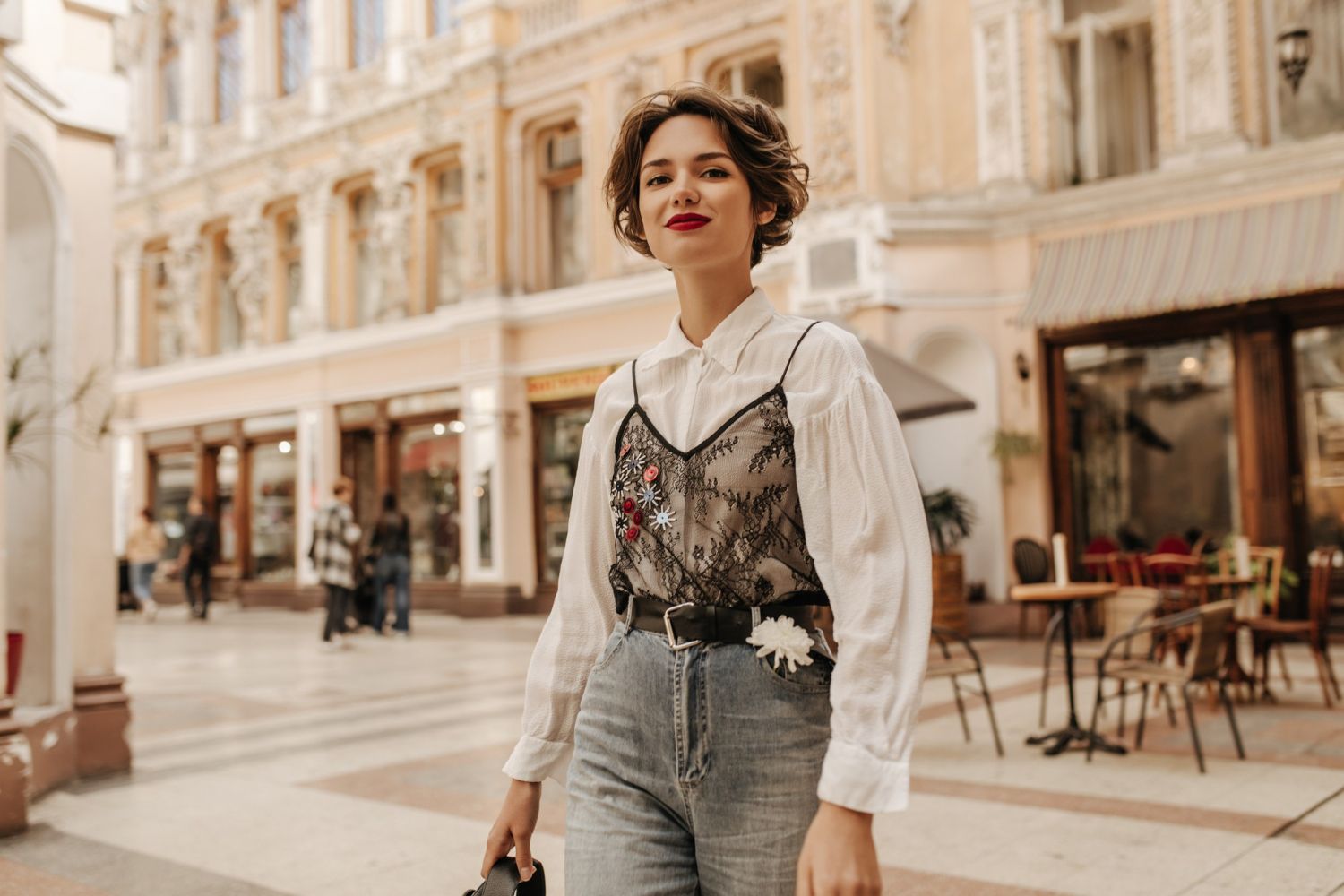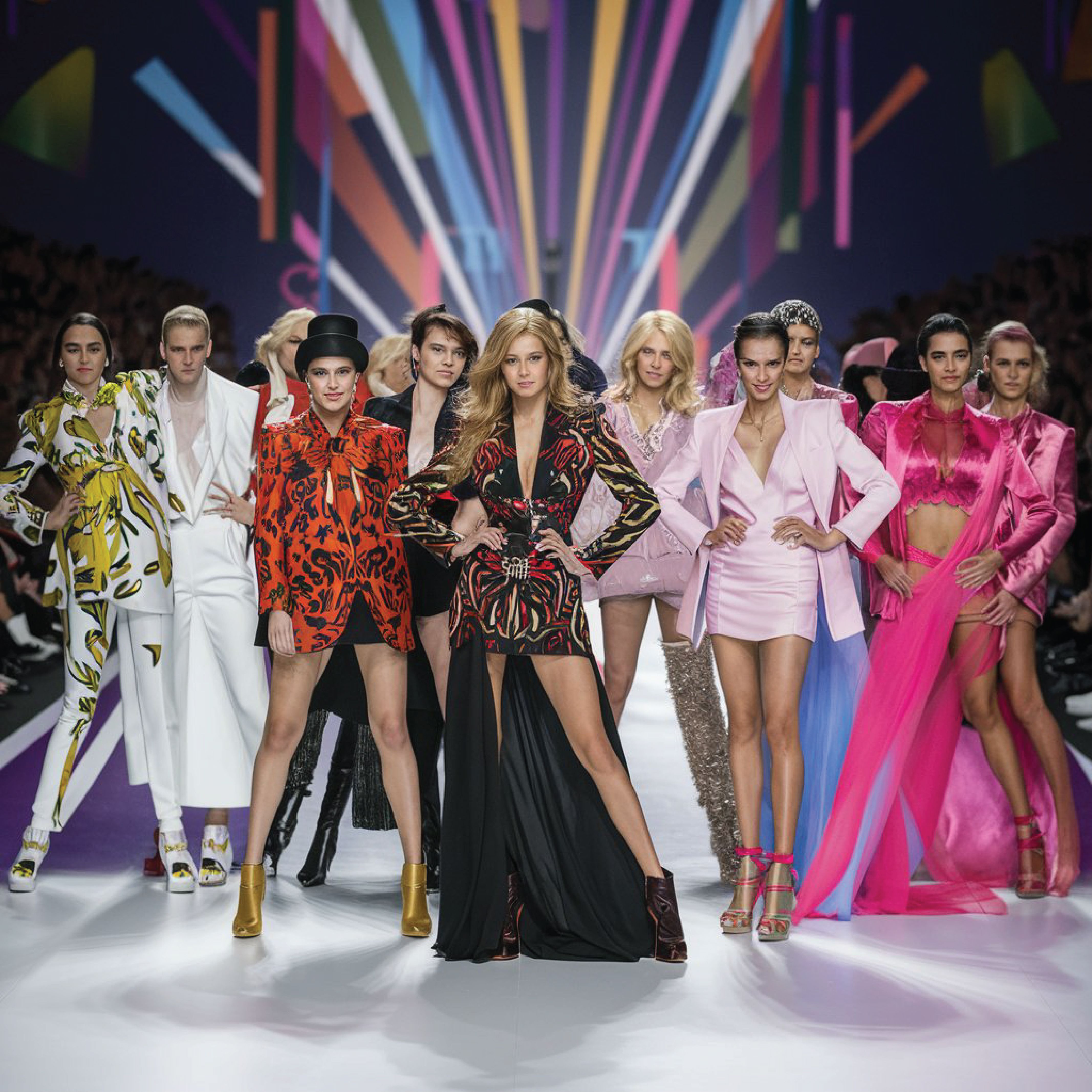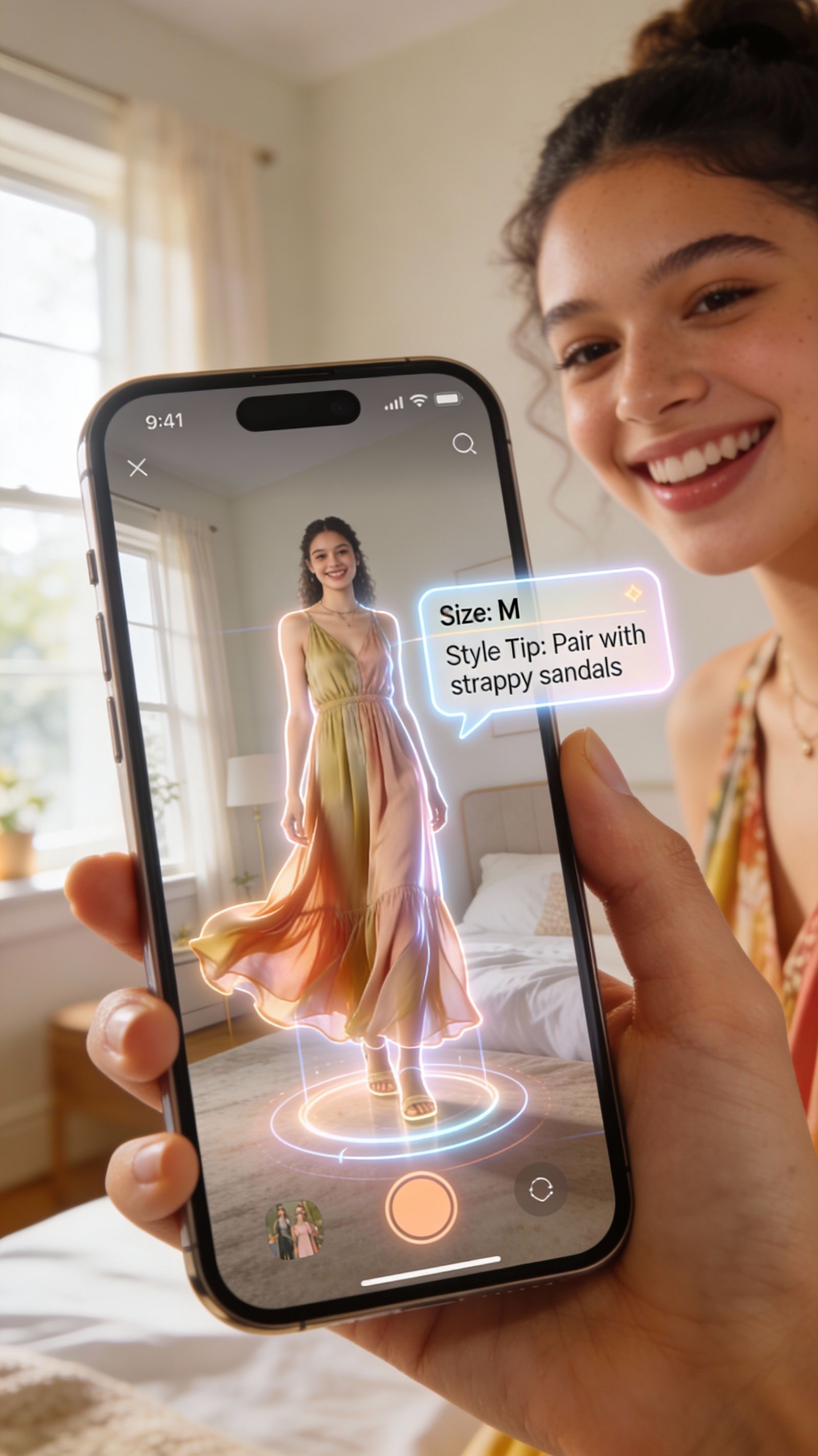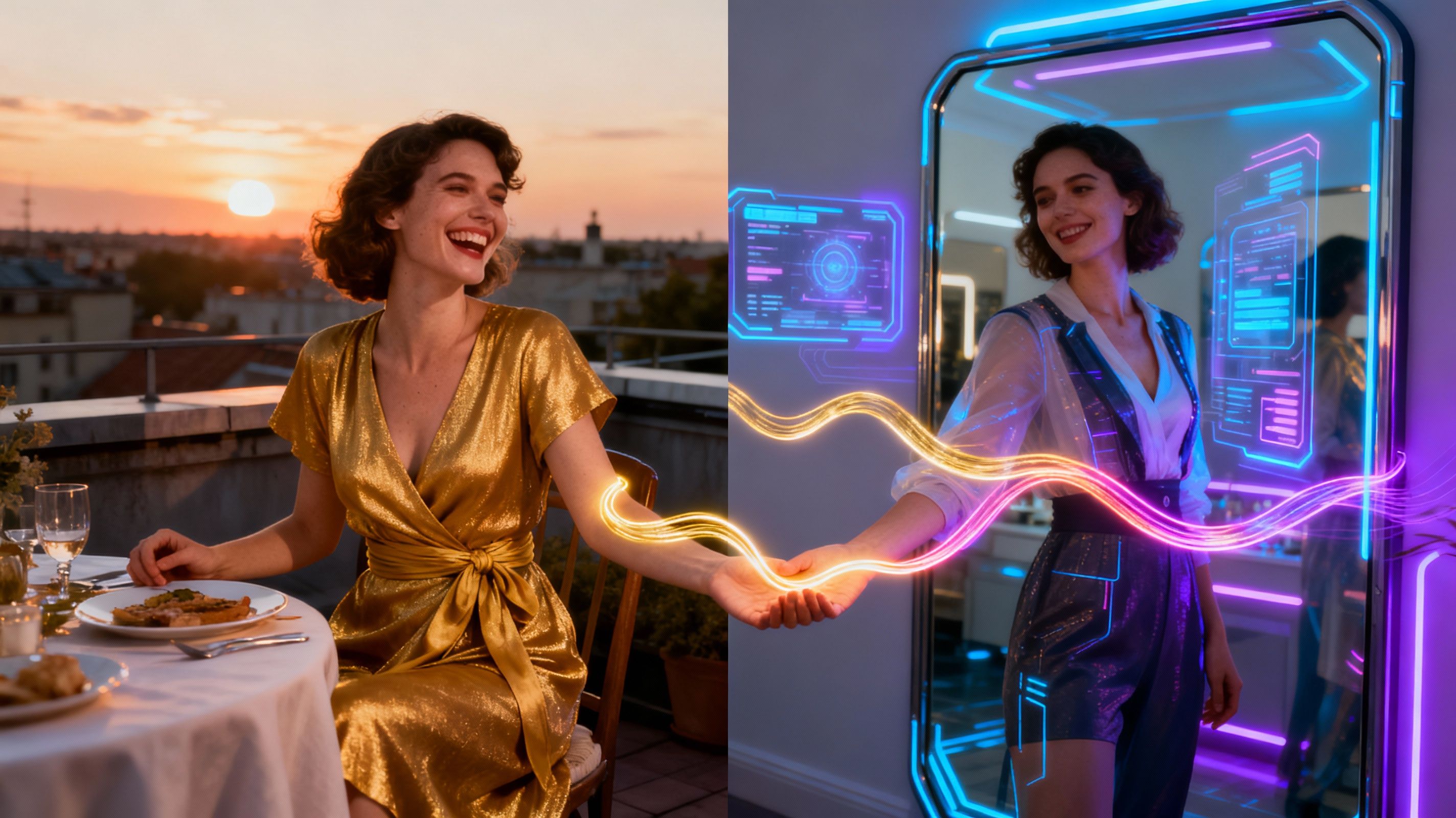AI for Men’s Fashion Advice: Smart Styling or Just Hype?
A Comprehensive Guide on Fashion Style 2025


TL;DR
Fashion styles are more than trends — they’re the way you express who you are through clothes, accessories, and aesthetics. In 2025, personal style matters more than ever, as social media accelerates micro-trends and consumers lean toward individuality, comfort, inclusivity, and sustainability. From timeless classics to bold avant-garde, 14 major fashion styles define today’s wardrobes, while sustainable choices and AI-powered tools like Glance AI help people refine their looks. The key takeaway? Trends fade, but your fashion style is your lasting signature.
When people hear the word fashion, many picture glossy magazine spreads or runway models in gravity-defying heels. But personal style? That’s something else. It’s quieter, deeper — and far more personal.
Your fashion style is how you translate who you are into what you wear. It reflects your personality, lifestyle, culture, and even your mood. It’s the difference between dressing up and showing up for yourself.
In 2025, where Instagram feeds move faster than trends and online carts are filled with impulse buys, defining your own style has never been more important. Why? Because fashion isn’t just a look anymore. It’s a language.
What is Fashion Style?

Fashion style is your unique way of expressing yourself through clothing, accessories, and how you carry them. It reflects your personality, preferences, lifestyle, and how you choose to present yourself to the world. It’s not about what’s new or popular—it’s about what feels right for you. Whether structured or free-spirited, bold or understated, fashion style is the visual language of who you are.
How is Fashion Style Different from Trends?

Fashion style is personal and enduring. It's the consistent way you express yourself through clothing, shaped by your taste, values, and lifestyle.
Trends, on the other hand, are fleeting. They reflect what’s currently popular, often influenced by celebrities, fashion weeks, or social media.
Think of it like this: style is your handwriting. Trends are the ink colors that come and go.
The Evolution of Fashion Styles
Styles don’t emerge out of nowhere. They're shaped by history:
- The 1920s flapper era symbolized freedom and rebellion.
- The 1970s boho wave reflected anti-establishment vibes.
- The 1990s grunge look came from garage bands and teen angst.
Today’s aesthetics, like cottagecore or clean girl, reflect our digital lives, climate awareness, and shifting gender norms.
Role of Culture, Geography, and Era in the Fashion Style
Fashion isn’t one-size-fits-all — literally or metaphorically.
- A minimalist in Tokyo dresses differently from one in New York.
- Preppy fashion in the US borrows from Ivy League culture, while UK preppy leans into British heritage.
Style, Aesthetic, Subculture: How They Intersect Fashion?
- Style is your overall approach.
- Aesthetic is a curated visual vibe — like Y2K, dark academia, or Scandi chic.
- Subcultures are groups where fashion signals belong (like punk, goth, or skater).
Understanding these layers helps you not just name what you like but own it.
Major Types of Fashion Styles
Now, when you understand fashion style, let’s explore the most recognizable 14 types of styles. So you can see which ones resonate with you.
Classic

- Vibe: Timeless, polished, structured
- Staples: Crisp button-downs, tailored trousers, trench coats
- Who Wears It: Think Meghan Markle or David Beckham on a workday
- Why It Works: It never goes out of style — perfect for those who value longevity and elegance
Casual

- Vibe: Relaxed, functional, everyday
- Staples: Jeans, T-shirts, sneakers, denim jackets
- Who Wears It: Everyone, everywhere — this is your go-to grocery store or coffee shop outfit
- Why It Works: Easy to wear, easy to layer, and endlessly adaptable
Sporty / Athleisure

- Vibe: Active meets aesthetic
- Staples: Leggings, hoodies, trainers, bike shorts
- Who Wears It: Gym-goers, moms on-the-go, or off-duty models
- Why It Works: Combines comfort and cool with performance-level materials
Bohemian (Boho)

- Vibe: Free-spirited, artistic, earthy
- Staples: Maxi skirts, peasant blouses, fringe, ethnic prints
- Who Wears It: Festival-goers, artists, or those who love nature
- Why It Works: Ideal for layering, mixing textures, and embracing flow
Grunge

- Vibe: Rebellious, moody, raw
- Staples: Flannels, ripped jeans, combat boots, oversized tees
- Who Wears It: Think Kurt Cobain, Gen Z thrift lovers
- Why It Works: Great for self-expression with an edge — and a lower budget
Preppy
- Vibe: Polished, collegiate, colorful
- Staples: Polo shirts, pleated skirts, cardigans, loafers
- Who Wears It: Ivy Leaguers, “old money” influencers, or golf club regulars
- Why It Works: Signals confidence and charm with a structured edge
Punk

- Vibe: Loud, aggressive, DIY
- Staples: Leather, safety pins, chains, band tees
- Who Wears It: Rebels with a cause — or at least a solid Spotify playlist
- Why It Works: Rejects mainstream fashion rules and embraces individuality
Streetwear

- Vibe: Urban, hype-driven, brand-heavy
- Staples: Graphic hoodies, cargo pants, rare sneakers
- Who Wears It: Skaters, sneakerheads, TikTok trendsetters
- Why It Works: Has serious cultural cachet — from sidewalks to runways
Minimalist

- Vibe: Clean, neutral, intentional
- Staples: Monochrome sets, structured bags, sleek flats
- Who Wears It: Scandinavian fashion lovers, tech professionals, creatives
- Why It Works: Prioritizes quality over quantity — fewer pieces, more impact
Maximalist

- Vibe: Bold, expressive, fearless
- Staples: Loud prints, sequins, mixed patterns, statement accessories
- Who Wears It: Art students, editorial stylists, the fashion-forward
- Why It Works: Perfect for breaking fashion rules and turning heads
Vintage/Retro

- Vibe: Nostalgic, curated
- Staples: Tea dresses, retro blazers, bell-bottoms
- Who Wears It: Thrift lovers, old soul dressers
- Why It Works: It's sustainable and tells a story — no two outfits alike
Romantic

- Vibe: Soft, dreamy, elegant
- Staples: Ruffles, lace, pastels, florals
- Who Wears It: Those inspired by literature, love, and Lana Del Rey
- Why It Works: Adds femininity and charm to modern wardrobes
Avant-Garde

- Vibe: Artistic, experimental, high-concept
- Staples: Asymmetrical cuts, unusual fabrics, futuristic shapes
- Who Wears It: Designers, performance artists, fashion radicals
- Why It Works: Pushes boundaries — fashion as wearable art
Gothic

- Vibe: Dark, theatrical, dramatic
- Staples: Black layers, corsets, leather, silver jewelry
- Who Wears It: Alt-culture devotees, musicians, and bold personalities
- Why It Works: Offers a bold identity and timeless subcultural appeal
Popular Fashion Aesthetics Shaping Fashion Style in the Country
Aesthetics are visual storytelling. They're not just about what you wear — they’re about the vibe you radiate. Thanks to platforms like TikTok and Pinterest, fashion aesthetics now evolve faster than ever.
Trending Aesthetics in 2025
- Cottagecore: Nature-loving, prairie dresses, soft lighting
- Y2K: 2000s revival — low-rise jeans, rhinestones, baby tees
- Dark Academia: Tweed, turtlenecks, moody palettes, literary chic
- Clean Girl: Slick buns, gold hoops, dewy skin, minimalist fits
- Coastal Grandmother: Breezy linens, neutral tones, summer calm
- Soft Grunge: A blend of vintage and moody — Tumblr meets TikTok
- Balletcore: Wrap tops, tights, blush tones — dance-inspired looks
How Social Media Shapes Aesthetics
- TikTok popularizes microtrends overnight.
- Pinterest is the go-to for mood boards and visual planning.
- Instagram gives aesthetics a curated, influencer-approved look.
These platforms let users “try on” aesthetics before committing — and build wardrobes accordingly.
Wardrobe Curation Tips
- Mix basics with signature pieces
- Define your core colors
- Organize your closet by function and vibe
- Rotate seasonally to keep things fresh
How Fashion Styles Transform for Different Body Types?

Your body is not a “problem” to fix — it’s a canvas to celebrate. Style should empower, not pressure you into trends that ignore comfort or individuality.
Vogue Business’s Spring/Summer 2025 Size Inclusivity Report noted that only 0.8% of runway looks were plus-size (U.S. 14+) and 4.3% mid-size (U.S. 6-12), highlighting the gap between consumer demand for inclusivity and what’s actually showing up in fashion shows.
Understanding Body Shapes
While every body is unique, recognizing general silhouettes helps in choosing pieces that flatter your proportions. Some common types:
- Pear-shaped: Narrow shoulders, wider hips
Try: Structured tops, A-line skirts, straight-leg pants - Apple-shaped: Broader upper body, slimmer legs
Try: V-neck tops, wrap dresses, high-waist jeans - Hourglass: Defined waist, balanced top and bottom
Try: Belted pieces, bodycon, tailored blazers - Rectangle: Straight from shoulder to hips
Try: Layered outfits, peplum tops, wide-leg pants - Inverted Triangle: Broad shoulders, narrower hips
Try: Flowy bottoms, scoop necks, fitted blazers
Note that these are guides, not rules. The best style is the one that makes you feel confident. In 2025, fashion is more body-inclusive than ever.
- Size-inclusive brands: From XXS to 5XL — style doesn’t stop at size 10
- Adaptive clothing: Magnetic closures, seated-friendly designs, sensory-sensitive fabrics
- Postpartum and maternity wear: Designed for comfort without losing edge
Fashion should adapt to you, not the other way around. However, following some ethics or choosing sustainability for your fashion can make you a responsible citizen.
Choosing Sustainable Fashion Styles: One Step Toward Protecting the Planet

Sustainability is a mindset. In a world of fast fashion, thoughtful dressing is a form of resistance and responsibility.
A study by Nosto found that 61% of U.S. fashion shoppers put price above sustainability, even when they want to buy more sustainable clothing. That’s why looks that last, are versatile, and priced fairly tend to win style + conscience combo.
What is Sustainable Fashion?
It’s fashion that’s mindful of its impact — on the planet, on workers, and on future generations. Key elements:
- Eco-friendly materials (organic cotton, hemp, recycled polyester)
- Slow fashion: Buying less but better
- Ethical labor practices: Fair wages, safe working conditions
- Circular design: Made to be reused, repaired, or recycled
According to a survey by Blue Yonder, about 69% of U.S. consumers say they’re willing to pay more for sustainable products, though only ~4% are okay with higher premiums like 20%. This shows strong intent, but also a limit on how much cost people are willing to absorb.
How to Incorporate Sustainability into Your Style
- Start with your closet: Re-wear, restyle, or repair what you already own
- Thrift or swap: Vintage isn’t just trendy — it’s planet-friendly
- Support ethical brands: Look for transparency, not just greenwashing
- Buy versatile pieces: Clothes that last longer and serve multiple looks
- Invest in quality basics: A well-made tee or blazer outlives five cheap ones
Pro Tip: Use the “30 Wears Rule” — before buying something, ask: Will I wear this 30 times? If not, skip it.
Sustainable fashion isn’t about perfection — it’s about progress, intention, and consciousness.
Building Confidence Through Fashion
Clothes don’t just cover you — they communicate. They express how you see yourself, and sometimes, how you want the world to see you. Great style doesn’t come from trends — it comes from self-trust.
A survey by The Harris Poll and SHEIN revealed that 69% of U.S. consumers say clothing feels more “me” when it's unique, and 68% of people identify their favorite clothes using comfort as a top factor. So defining your own style isn't just about looks — it’s how pieces make you feel.
The Psychology of Style
What you wear influences not just how others perceive you — but how you feel about yourself. It’s called “enclothed cognition” — the science-backed idea that clothing affects your performance, mood, and self-esteem.
- Wearing bold colors can boost your energy
- A tailored jacket can make you feel more competent
- Soft textures and familiar silhouettes evoke comfort and ease
Fashion isn’t vanity — it’s psychology in motion.
Overcoming Fashion Anxiety
Let’s face it: fashion can be intimidating. Maybe you’re scared to “get it wrong,” or feel judged trying something new. But guess what?
Everyone starts somewhere. Style is learned. And it evolves.
- Start small: Add one statement piece to an outfit you already love
- Use Pinterest or Instagram: Create a “style board” to visualize what excites you
- Forget the rules: There’s no age limit, body type, or budget requirement for style
- Practice dressing for yourself — not just the mirror or the ‘likes’
Fashion confidence grows when you stop chasing perfection — and start dressing for your real self.
Embracing Individuality
The most magnetic people in the room aren’t the ones in designer labels — they’re the ones who dress like they mean it. Whether you’re a minimalist in all-black or a maximalist in neon — own your look.
You don’t need permission to stand out.
Style isn't about impressing others. It's about expressing yourself — loudly, quietly, however you choose.
Fashion Style Mistakes to Avoid
Even the most stylish people make fashion missteps. The goal isn’t perfection — it’s awareness. Here are some common style pitfalls (and how to dodge them):
1. Chasing Every Trend
Fashion moves fast. That doesn’t mean your wardrobe should. Constantly buying the next “It” item can lead to clutter, confusion, and a closet full of regret.
Fix: Focus on what flatters your shape and fits your lifestyle. Mix one or two trends with timeless staples.
2. Ignoring Fit and Comfort
A trendy jacket that pinches at the shoulders won’t get worn. Ever. Ill-fitting clothes kill confidence.
Fix: Prioritize tailoring. Even affordable pieces look expensive when they fit right.
3. Overdoing It
Too many patterns. Too many accessories. Too much “trying.”
Fix: Use the “mirror test” — if something feels off, take off one item. Let your outfit breathe.
4. Relying Too Much on Fast Fashion
Fast fashion is tempting — it's cheap and on-trend. But it often sacrifices quality, ethics, and long-term wearability.
Fix: Invest in key pieces and explore second-hand or ethical brands. You’ll feel better and look better.
How to Identify and Develop Your Personal Fashion Style?
Finding your style isn’t about following every trend — it’s about discovering what feels like you. Here's how to start:
Self-Assessment First
- What’s your daily routine?
- Do you prioritize comfort or creativity?
- What colors or silhouettes do you always reach for?
- Do you dress to blend in or stand out?
Look for Inspiration
- Celebrities whose style speaks to you
- TV shows or movies with memorable wardrobes
- Fashion bloggers or stylists
- Even your own childhood photos — you'd be surprised
Build a Mood Board
Use Pinterest or Canva to collect pieces, looks, and textures that speak to you. Patterns will emerge — colors you love, silhouettes you prefer, fabrics you gravitate toward.
Try, Fail, Repeat
Don’t be afraid to experiment. Style discovery isn’t linear — some outfits flop, and that’s part of the fun.
Start with a Capsule Wardrobe
A capsule wardrobe helps you:
- Reduce decision fatigue
- Maximize outfit combinations
- Focus on quality over quantity
Start with:
- 2-3 bottoms
- 3-4 tops
- 1 layering piece
- 2 pairs of shoes
- 1 statement item (jacket or accessory)
If you’re still finding it difficult, platforms like Glance AI can help you out with this.
How Glance AI Is Redefining Personal Style?
Fashion has always been personal — but now, it’s becoming intelligently personal, thanks to AI platforms like Glance AI.
Glance AI, backed by Google, helps you not just discover clothing — it helps you visualize yourself in it before buying. Think of it as your virtual stylist, mirror, and shopping assistant rolled into one.
What Makes It Game-Changing?
- AI-Tailored Recommendations: It studies your preferences, past likes, and body type to suggest looks that genuinely suit you — not what just “sells.”
- Instant Outfit Visualization: Glance AI shows you how a jacket, dress, or pair of shoes would look on you, not on any model. This increases your buying confidence.
- Occasion-Based Styling: Planning a date night or a beach vacation? Glance curates outfits by event, weather, and even mood.
- Trend Meets You: Instead of you chasing what's hot, Glance brings curated trends that match your vibe. Be it edgy streetwear, soft minimalism, or bold statements.
- Buy What You See: Loved the look? You can own it instantly with a tap. No need to scroll endlessly or guess sizing.
Conclusion
Remember fashion style is all about how you dress truer to yourself. So, take your next steps towards style better. Declutter your closet and rethink what makes you feel powerful, calm, expressive, or cool. Whether you’re crafting a signature style or discovering five different sides of your fashion personality — you’re not starting from scratch, you’re starting from insight.
Let fashion be playful, practical, or poetic — just make sure it’s personal.
Because your best style is the one that reflects your boldest, most authentic self.
FAQs
- What is Gen Z fashion style?
Gen Z fashion is expressive, gender-fluid, thrift-driven, and heavily influenced by TikTok aesthetics and sustainability.
2. What is the most popular fashion style?
Casual streetwear remains the most popular, blending comfort, individuality, and cultural trends into everyday, wearable looks.
3. What is the 3 outfit rule?
The 3 outfit rule suggests buying an item only if you can style it into three different, complete outfits.
4. Can I mix different fashion styles?
Absolutely! Mixing aesthetics (e.g., streetwear + vintage) is how many people develop a unique signature style.
5. How do I find my personal style?
Start with what makes you feel confident. Use Pinterest boards, follow influencers, and experiment with outfit combos.
6. How can I make my fashion choices more sustainable?
Buy less, choose well, invest in quality over quantity, thrift often, and support ethical or local brands.






